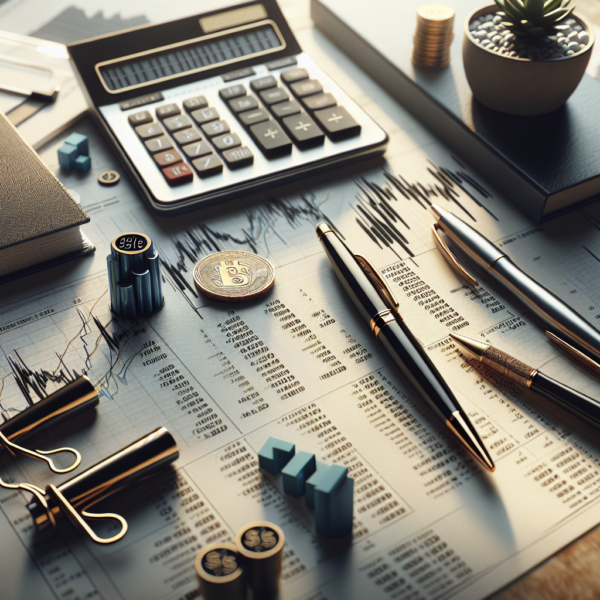Introduction to Copper as an Investment
Copper, often referred to as “Dr. Copper” due to its ability to diagnose the overall health of the global economy, is a crucial industrial metal with diverse applications across various sectors. As a vital component in clean energy technologies, electric vehicles, and infrastructure, copper has garnered significant attention from investors seeking to capitalize on the growing demand driven by the green energy transition and global economic growth.
Why Copper is Called ‘Dr. Copper’
Copper’s price movements are often seen as a reliable indicator of the global economic health, earning it the nickname ‘Dr. Copper.’ When copper prices rise, it typically signals a robust economy with strong industrial activity. Conversely, declining copper prices may indicate an economic slowdown or contraction. This close relationship between copper prices and economic performance makes the metal a valuable tool for investors and analysts to gauge market sentiment.
Factors Influencing Copper Prices
The price of copper is influenced by a complex interplay of supply and demand dynamics, as well as various global events and market forces. Some key factors that impact copper prices include:
- Global economic growth and industrial activity
- Supply disruptions due to mining strikes, environmental issues, or geopolitical tensions
- Demand from emerging markets, particularly China and India
- Advancements in clean energy technologies and electric vehicle adoption
- Currency fluctuations and investor sentiment
As an investor, understanding these underlying drivers is crucial for making informed decisions when considering copper as part of your investment portfolio.
Copper Market Outlook and Demand Drivers
The copper market is poised for significant growth in the coming years, driven by the increasing demand from the green energy sector and the global push towards sustainability. According to S&P Global, copper consumption is expected to rise by 20% by 2035, largely due to the expanding green energy market.
Projected Growth in Copper Consumption
The International Energy Agency (IEA) forecasts that clean energy technologies will account for 40% of the total copper demand by 2040. This surge in demand is attributed to copper’s critical role in renewable energy systems, electric vehicles, and energy-efficient infrastructure. As countries worldwide commit to reducing carbon emissions and transitioning to cleaner energy sources, the demand for copper is expected to soar, creating a favorable long-term outlook for investors.
Impact of Global Events on Copper Market Dynamics
While the long-term prospects for copper remain promising, investors must also consider the short-term volatility and risks associated with global events. The COVID-19 pandemic, for example, has disrupted supply chains and impacted the demand for copper in some sectors. Similarly, geopolitical tensions, such as the ongoing conflict between Russia and Ukraine, can introduce uncertainty and impact market dynamics.
Despite these challenges, experts remain optimistic about the long-term fundamentals of the copper market. As Jason Hollands, Managing Director at Bestinvest, notes, “The long-term story for copper looks pretty positive given its use in the energy transition.” Investors who can navigate short-term volatility may find attractive opportunities in the copper market.
Methods of Investing in Copper
Investors looking to gain exposure to copper have several options to consider, each with its own risk profile and potential rewards. Let’s explore some of the most common methods of investing in copper:
Indirect Investment via Exchange-Traded Funds (ETFs)
Exchange-traded funds (ETFs) offer investors a convenient and diversified way to gain exposure to the copper market. These funds typically hold a basket of copper mining stocks or track the price of copper futures contracts. Examples of copper ETFs include the WisdomTree Copper ETC, which tracks the Bloomberg Copper Sub Total Return Index, and the Global X Copper Miners UCITS ETF, which tracks the Solactive Copper Miners Total Return Index.
Investing in copper ETFs provides indirect exposure to the metal, as well as the potential for capital appreciation and dividend income from the underlying mining companies. However, it’s important to note that the performance of copper mining stocks may not always directly correlate with the price of copper, as these companies are also influenced by factors such as operational efficiency, production costs, and geopolitical risks.
Futures Contracts for Lower-Risk Copper Market Participation
For investors seeking a more direct way to participate in the copper market without the high capital requirements of physical ownership, futures contracts offer an attractive option. Copper futures are standardized contracts that allow investors to buy or sell a specific amount of copper at a predetermined price and date in the future.
Futures contracts provide investors with the ability to leverage their positions and potentially profit from both rising and falling copper prices. However, it’s crucial to understand the risks associated with futures trading, such as the potential for significant losses if the market moves against your position. Investors should have a solid understanding of the copper market and the factors influencing prices before engaging in futures trading.
Direct Participation through Copper Mining Stocks
Investing directly in copper mining stocks is another way for investors to gain exposure to the copper market. By purchasing shares in companies that explore, develop, and produce copper, investors can benefit from the potential capital appreciation and dividend income associated with these firms.
Some of the world’s largest copper mining companies include:
| Company | Ticker Symbol |
|---|---|
| Freeport-McMoRan Inc. | NYSE: FCX |
| Glencore PLC | LSE: GLEN, OTC Pink: GLCNF |
| BHP Group Ltd. | ASX: BHP, NYSE: BHP, LSE: BHP |
| Rio Tinto PLC | LSE: RIO, NYSE: RIO, ASX: RIO |
When investing in copper mining stocks, it’s essential to conduct thorough research and analysis of the company’s financial health, production costs, reserve estimates, and growth prospects. Additionally, investors should be aware of the risks associated with mining operations, such as environmental concerns, labor disputes, and geopolitical instability in the countries where these companies operate.
Other Copper Investment Options: Bullion and Options
In addition to ETFs, futures contracts, and mining stocks, investors can also consider other methods of investing in copper, such as purchasing physical copper bullion or trading copper options.
Copper bullion, available in the form of bars, coins, or rounds, allows investors to own the metal directly. However, physical ownership comes with storage and security considerations, as well as potentially higher transaction costs compared to other investment methods.
Copper options, on the other hand, provide investors with the right, but not the obligation, to buy or sell copper futures contracts at a specific price and date. Options trading can be complex and is generally recommended for experienced investors with a solid understanding of the copper market and options strategies.
Risks and Considerations for Copper Investors
While copper presents attractive investment opportunities, it’s crucial for investors to understand and carefully consider the risks and challenges associated with this market.
Volatility and Risks in the Copper Market
The copper market is known for its volatility, with prices subject to rapid fluctuations based on various factors such as global economic conditions, supply and demand dynamics, and geopolitical events. This volatility can create both opportunities and risks for investors, requiring a well-informed and disciplined approach to navigate the market successfully.
Some of the key risks in the copper market include:
- Supply disruptions due to mining accidents, labor strikes, or environmental issues
- Geopolitical instability in major copper-producing countries
- Economic slowdowns or recessions that impact copper demand
- Technological advancements that may reduce copper consumption in certain applications
- Currency fluctuations that can affect the value of copper investments
Analyzing Key Metrics for Copper Mining Securities
When considering investments in copper mining securities, it’s essential to analyze key financial metrics to assess the health and viability of these companies. Some important factors to consider include:
Leverage Ratios: Copper mining is a capital-intensive industry, and many companies carry significant debt on their balance sheets. Analyzing leverage ratios, such as debt-to-equity or debt-to-EBITDA, can help investors gauge a company’s financial risk and ability to manage its debt obligations.
Cash Flow and Profitability: Evaluating a mining company’s cash flow generation and profitability is crucial for determining its financial stability and ability to fund operations, invest in growth, and potentially pay dividends to shareholders. Key metrics to consider include operating cash flow, free cash flow, and profit margins.
Production Costs and Efficiency: The cost structure of a copper mining company can significantly impact its profitability and competitiveness. Investors should analyze metrics such as cash costs, all-in sustaining costs (AISC), and production efficiency to compare the performance of different mining companies.
Reserve Estimates and Exploration Success: A copper mining company’s long-term viability depends on its ability to replace depleted reserves and discover new deposits. Investors should review a company’s proven and probable reserve estimates, as well as its exploration and development pipeline, to assess its growth potential and resource base.
Balancing Copper Investments in a Diversified Portfolio
As with any investment, it’s important to consider copper within the context of a well-diversified portfolio. While copper can offer attractive growth prospects and potential hedging benefits against inflation, it should not dominate an investor’s portfolio.
Experts generally recommend that commodities, including copper, should not exceed 5% of an individual’s total investment portfolio. This allocation helps to manage risk and ensures that the portfolio remains balanced across different asset classes, sectors, and geographies.
Additionally, investors should consider the impact of currency exchange rates on their copper investments, particularly if they are based outside of the United States. Fluctuations in exchange rates can affect the value of copper investments when translated back into the investor’s local currency.
Copper’s Role in the Global Economy and Industries
Copper’s importance extends far beyond its role as an investment asset. This versatile metal plays a critical role in various industries and is considered a key driver of global economic growth.
Copper’s Versatility Across Various Industries
Copper’s unique properties, including its high conductivity, ductility, and resistance to corrosion, make it an essential component in a wide range of applications. Some of the key industries that rely on copper include:
- Electrical and Electronics: Copper is used extensively in wiring, transformers, motors, and printed circuit boards.
- Construction: Copper is a key component in plumbing, roofing, and heating, ventilation, and air conditioning (HVAC) systems.
- Transportation: Copper is used in the production of automobiles, trains, and ships, particularly in electrical systems and motors.
- Renewable Energy: Copper is essential for the construction of wind turbines, solar panels, and energy storage systems.
- Healthcare: Copper’s antimicrobial properties make it valuable in healthcare settings for reducing the spread of infections.
As these industries continue to grow and evolve, the demand for copper is expected to remain strong, underscoring its importance in the global economy.
Copper as a Leading Economic Indicator
Copper’s widespread use across various sectors makes it a valuable leading indicator for the global economy. Changes in copper prices often reflect shifts in economic activity, as demand for the metal tends to increase during periods of economic expansion and decrease during downturns.
Investors and analysts closely monitor copper prices to gauge the health of the global economy and anticipate potential changes in market conditions. Rising copper prices may signal improving economic growth, while falling prices could indicate a slowdown or contraction.
Major Players in the Global Copper Market
Understanding the key players in the global copper market is essential for investors seeking to make informed decisions. Let’s take a closer look at the major copper-producing countries and companies, as well as the key importers and consumers of this vital metal.
Top Copper-Producing Countries and Companies
The global copper supply is dominated by a handful of countries and companies. The top copper-producing countries include:
Chile: As the world’s largest copper producer, Chile accounts for approximately 28% of global copper production. The country’s copper reserves are also the largest in the world, ensuring its continued dominance in the market.
Peru: Peru is the second-largest copper producer, accounting for about 12% of global output. The country has seen significant investments in its copper mining industry in recent years.
China: China is not only a major copper producer but also the world’s largest consumer of the metal. The country’s copper production accounts for roughly 8% of the global total.
Russia: As a top copper-producing country, Russia’s copper industry plays a significant role in the global market. The country’s vast mineral resources and established mining infrastructure contribute to its position as a key player in the copper market.
Some of the world’s largest copper mining companies include Freeport-McMoRan, Glencore, BHP, and Rio Tinto, among others. These companies operate mines in various countries and play a crucial role in shaping the global copper supply.
Key Copper Importers and Consumers
The demand side of the copper market is primarily driven by countries with significant manufacturing and infrastructure development needs. The key copper importers and consumers include:
China: As the world’s largest copper consumer, China accounts for nearly half of the global copper demand. The country’s rapid industrialization, urbanization, and transition to clean energy technologies have fueled its substantial appetite for copper.
India: India’s growing economy and increasing investments in infrastructure development have made it a significant copper consumer. The country’s demand for copper is expected to continue rising as it focuses on modernizing its electrical grid and expanding its renewable energy capacity.
Other major copper consumers include the United States, Japan, and Germany, among others. These countries rely on copper for various applications in construction, manufacturing, and technology sectors.
As the global economy continues to evolve and the demand for clean energy technologies grows, the dynamics of the copper market will likely undergo significant changes. Investors should stay informed about the major players, market trends, and evolving demand patterns to make well-informed decisions when investing in copper.
See also:




Leave a Comment